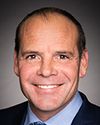Thank you, Madam Chair, and thank you to all the witnesses.
Unfortunately, this is kind of a gloomy Friday, so to speak, with regard to some of the testimony. Although it's fantastic, true testimony, it's gloomy, quite frankly.
We heard that just a few years ago a container used to cost $3,000 to ship, and that at the peak it was $23,000 to ship a container. There is one taxpayer and one final end-user, and it is each and every Canadian. I don't know if it's price gouging. I don't know what it is, but it seems pretty wild. It's no wonder that Canadians can't make ends meet.
The discussion is not about just building more containers. That's not going to solve the problem. This is very much a shipping issue, and I understand it from that aspect.
I'm fortunate to have visited ADM, a shipping company specifically for grain, right in the Windsor-Essex area. The majority of their shipments of grain go to the United States, which is, of course, our greatest trading partner. I've met with them. They sit right next to the Windsor Port Authority, and I've visited them as well. I understand the whole rail side of things. Ironically, as I've said a million times, if you can find it in Canada, you'll find it in Essex.
I want to speak very quickly to Mr. Sheehan.
I really appreciate you bringing up the labour aspect of this, sir. As the shadow minister for labour, I have been in direct contact with a lot of the unions on both the east and west coasts. I do realize that hours differ from coast to coast with regard to how many hours they can work compared to how many hours they can have off.
Mr. Hemmes, you mentioned that the third-worst port in the world is Vancouver. I'm going to say that's the bad news. Actually, no, I would have to say that's the good news, because we also have the Toronto airport, which was deemed the worst airport in the world. I think it's now number two. Perhaps the Vancouver port isn't as bad as we think it is.
Mr. Negad, could you tell me what we can do going forward? If we had a magic wand today, what would be the answer? What's the immediate answer to relieve some of this pain?





